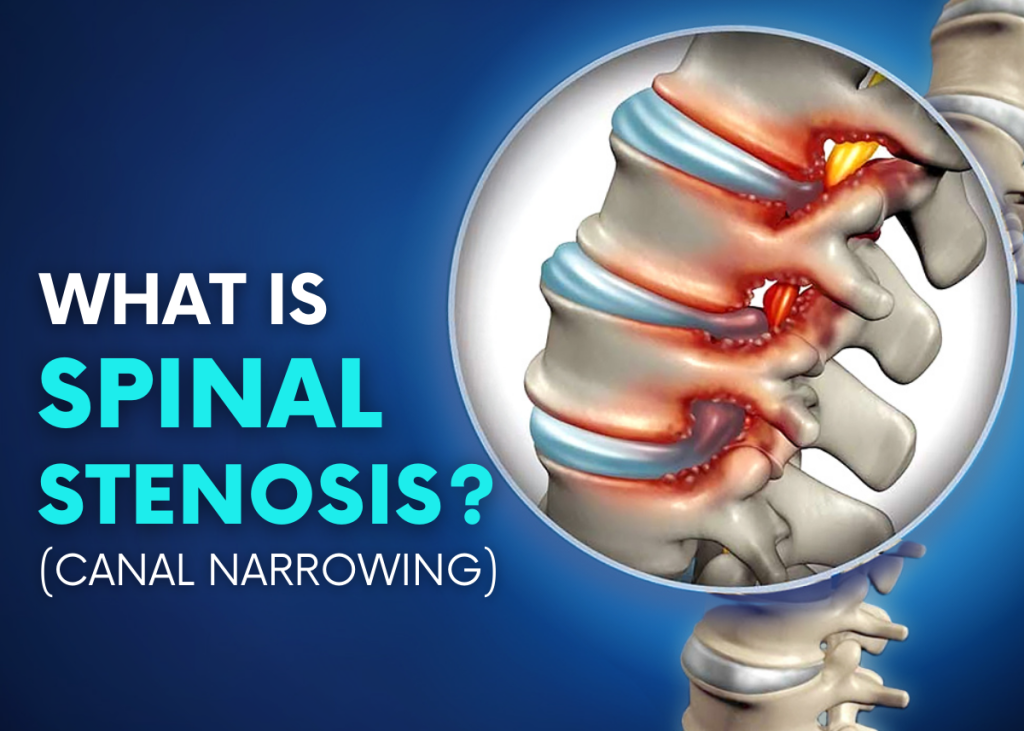
Spinal stenosis or spinal canal narrowing occurs with aging, as a result of degeneration of spinal joints, thickening of spinal ligaments, and bulging discs. Depending on the severity of these issues and their coexistence, a spinal stenosis is formed. In simpler terms, the reduction in the amount of water flowing through a hose after two small stones are thrown into it is similar to the formation of a spinal stenosis. The symptoms of spinal stenosis vary depending on the location of the narrowing, its severity, and which nerves are affected. If you are experiencing issues such as pain, numbness, and weakness in your lower back, neck, spine, arms, or legs, or if you have spinal stenosis, this article is prepared for you.
Table Of Contents:
- What is Spinal Stenosis?
- What are the Symptoms of Spinal Stenosis?
- What are the Risk Factors for Spinal Stenosis?
- How is Spinal Stenosis Diagnosed?
- Treatment Methods for Spinal Stenosis
- Surgery for Spinal Stenosis (Narrow Canal) with Robotic Spine Surgery
- Frequently Asked Questions About Spinal Stenosis
What is Spinal Stenosis?
Vertebrae are the bony structures that surround the spinal cord and nerve fibers. The space in the middle of the bones and connective tissues surrounding the spinal cord is known as the ‘spinal canal’ or ‘spinal cord canal’.
Spinal stenosis (narrow canal) is defined as the narrowing of the spinal canal, leading to compression of nerve roots and the spinal cord nerve bundle. In its simplest form, it is the narrowing of the canal(s) in the spinal region, either one or more. Depending on the location and severity of the spinal stenosis, individuals may experience pain, tingling, and weakness in the lower back, neck, spine, arms, and legs.
Spinal stenosis can occur in later life, but it can also be present from birth. Spinal narrowing observed at a young age is often related to congenital structural abnormalities. Spinal canal narrowing that develops in later years is associated with factors such as inactivity, heavy lifting, excess weight, scoliosis, herniated discs, arthritis, smoking, age-related thickening of the ligaments that connect spinal bones, and genetic factors.
Early diagnosis and treatment are crucial in spinal stenosis, which is two times more common in men compared to women. While spinal stenosis typically develops in individuals aged 45-50 and above, it can also occur in younger individuals. Spinal stenosis in young individuals can occur due to degenerative changes, congenital spinal deformities (such as trauma and scoliosis), and genetic conditions that affect bone and muscle development in the body.
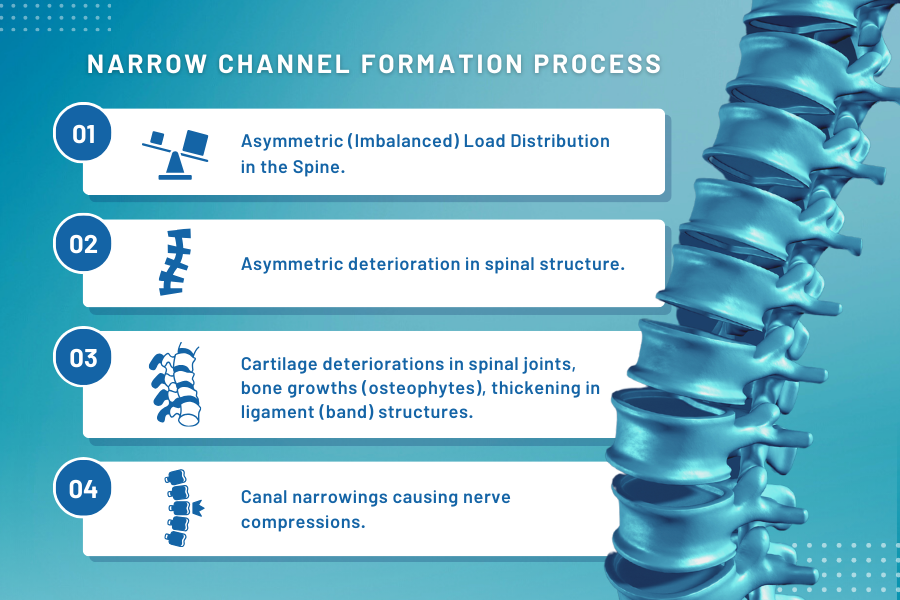
Spinal stenosis is classified based on the location in the spine where it occurs. However, the commonly observed types of spinal stenosis include the following:
- Cervical Stenosis: Cervical (neck) spinal stenosis is the narrowing of the canals through which the spinal cord and nerve fibers pass in the neck region of the spine.
- Lumbar Stenosis: Lumbar (lower back) spinal stenosis is the narrowing of the canal in the lower part of the spine.
The narrowing of the spinal canal or the canals surrounding nerve fibers can lead to compression of the spinal nerve root. This condition can result in wear and damage to the nerves.
What are the Symptoms of Spinal Stenosis?
Spinal stenosis may not always manifest symptoms. Research indicates that even individuals with significant narrowing evident in MRI (Magnetic Resonance Imaging) and CT (Computed Tomography) results may sometimes not exhibit symptoms. Additionally, spinal stenosis is a slowly progressing condition that worsens over time.
The symptoms of spinal stenosis can vary depending on the location, degree of narrowing, and which nerves are affected. However, some common symptoms of spinal stenosis include the following:
| Symptoms of Cervical (Neck) Stenosis | Symptoms of Lumbar (Lower Back) Stenosis |
| 1. Numbness or tingling in the hand, arm, foot, or leg | 1. Numbness or tingling in the hip, foot, or leg |
| 2. Weakness in the hand, arm, foot, or leg as the stenosis worsens | 2. Weakness in the foot or leg as the stenosis worsens |
| 3. Walking and balance problems | 3. Increased pain when standing or walking for extended periods |
| 4. Neck pain | 4. Pain starting in the lower back or buttocks and radiating down the leg (sciatica) |
| 5. Decreased reflexes in the arms and legs | 5. Pain and cramps that typically ease with bending forward or sitting |
| 6. Decreased manual dexterity (difficulty with buttoning shirts and tying shoelaces) | 6. A sensation of heaviness in the feet and legs that can lead to cramping |
| 7. Loss of bladder or bowel control (in severe cases) | 7. Loss of bladder or bowel control (in severe cases) |
What are the Risk Factors for Spinal Stenosis?
There can be several causes of spinal stenosis. However, some risk factors that can cause spinal stenosis include the following:
- Bony outgrowths due to osteoarthritis: Cartilage is a protective layer that covers bone surfaces. The reduction in cartilage thickness due to osteoarthritis can lead to bony outgrowths on bone surfaces. These new bone formations can lead to the compression of spinal nerves.
- Disc herniations: There are cushion-like structures called discs between each pair of vertebrae that provide protection against shocks. With aging, the structures of these cushions deteriorate, and the gel-like contents within them can bulge toward the spinal stenosis. This bulging can lead to narrowing of the spinal canal.
- Thickening of spinal ligaments: Along with osteoarthritis, there can be thickening of the ligaments that hold the spine together. This condition can lead to narrowing of the spinal canal and compression of nerves.
- Spinal fractures and injuries: In cases of spinal fractures and injuries, displaced broken fragments or trauma-induced soft tissue swelling can lead to canal narrowing.
- Spinal canal cysts and tumors: Formations such as cysts or tumors that occupy space within the spinal canal can lead to a reduction in the space available for spinal nerves.
- Congenital spinal stenosis: Spinal canal stenosis can occur from birth or be related to congenital spinal abnormalities, such as scoliosis.
How is Spinal Stenosis Diagnosed?
In the diagnosis of spinal stenosis, the following steps are involved:
- Your doctor will perform a physical examination based on your complaints.
- During the examination, painful points in your spine, lower back, or hips are identified, and your doctor checks whether your pain increases when you bend in different directions.
- Your walking gait, balance, and leg muscle strength are assessed.
After the examination findings, the results of the requested imaging methods are evaluated by your doctor. These imaging methods include X-rays (Direct radiography), MRI (Magnetic Resonance Imaging), Computed Tomography (CT), or a CT Myelogram (Image 2).

After reviewing the images, your doctor will create the most suitable treatment plan based on the examination findings, your age, and activity level. To learn more about the diagnosis and treatment methods for Spinal Stenosis, click here.
How is Spinal Stenosis Treated?
The choice of treatment method for spinal stenosis varies depending on the location, severity, the seriousness of the problem, and the symptoms. For mild to moderate spinal canal stenosis symptoms, your doctor may recommend home exercises for spinal stenosis that you can perform.
If the exercises for spinal stenosis are insufficient, physical therapy and medication treatment may be recommended. If these methods do not provide relief, interventional pain treatments such as epidural injections may be administered. However, when all the mentioned treatment options do not provide a response, surgical treatment is considered.
When there is weakness in the legs and loss of bladder and bowel control, surgical intervention is the primary option.
Non-Surgical Treatment Methods for Spinal Stenosis
- Oral Medications: Non-steroidal anti-inflammatory drugs and pain relievers. Individuals with stomach ulcers and reflux issues are advised to consult their doctors before using these medications.
- Physical Therapy: Strengthening the lower back muscles with back exercises is effective in increasing spinal flexibility and body balance.
- Steroid Injections: Steroid injections administered into the epidural space can reduce pain caused by nerve root inflammation. However, epidural steroid injections should be administered no more than three or four times a year.

Surgical Treatment Options for Spinal Stenosis
Relieving Nerve Compression (Screwless Spinal Stenosis Surgery): In cases of spinal stenosis occurring at a single spinal level, the bone extensions causing the narrowing, thickened ligaments, and herniated disc structures are removed.
Screwless spinal surgeries; Can be performed as either minimally invasive (entering through the skin with a camera) or open surgery. In this technique performed under local anesthesia and sedation, ligaments causing narrowing and some bone protrusions are removed from the canal. The advantage is that it eliminates the narrowing without disrupting the anatomical structure of the spine, and the patient can be discharged the same day with minimal pain. Furthermore, patients can return to their work life quickly.
In addition to relieving nerve compression, when there is spinal stenosis in multiple regions along the spine, the structure of the spine can be disrupted due to the removal of bone and ligaments. In such cases, the vertebrae are fused together (Screwed Spinal Stenosis Surgery). Therefore, to keep the vertebrae together, a fixation is performed using screwing procedures. This fixation process allows the vertebrae to fuse together.
Surgery for Spinal Stenosis with Robotic Spine Surgery
Robotic spine surgery is a next-generation technology that minimizes the risk of paralysis and nerve damage in spine surgeries, allowing for highly precise and reliable procedures. Spinal stenosis (narrow canal) surgery can be performed using robotic spine surgery. Thanks to the robotic technology used, a pre-operative surgical plan tailored to the spinal structure of each patient is created. Thus, during the surgery, screws are placed into the spine with an accuracy of 99.5% or higher.
In some cases of robotic spinal stenosis surgery, the goal is to minimize damage to body tissues, and the surgical procedure can be performed with small incisions (minimally invasive). In robot-assisted spinal stenosis surgeries performed using the minimally invasive method, both screwing and nerve decompression procedures can be performed.
Some of the advantages of canal stenosis surgery performed with the assistance of robotic systems include the following:
- Surgery is performed in a way that is most suitable for the patient’s anatomy through preoperative planning.
- Surgical implants such as screws are placed in the spine with the utmost accuracy and precision within a narrow bone canal during surgery.
- Procedures such as the placement of screws in the spine are monitored in real-time during surgery using three-dimensional (3D) imaging. This minimizes the margin of error that may occur during surgery.
- After surgery, patients experience less pain and a faster recovery process.
Robot-assisted spinal stenosis surgeries, which are performed in some of the world’s leading and modern healthcare centers, have been initiated for the first time in Turkey at our Bursa Turan & Turan Bone Muscle Joint Health Center. For detailed information about robotic spine surgery and spinal stenosis surgery, you can reach out to us and share your questions in the comments.

Frequently Asked Questions About Spinal Stenosis
When is surgical treatment considered in spinal stenosis disease?
Surgical treatment for spinal stenosis should be considered when other treatment methods (medication use, physical therapy, etc.) are not sufficient. However, in some cases, it may be considered as the first option. These include:
- A decrease in the individual’s quality of life due to symptoms,
- Significant limitations in walking distance,
- A reduction in the ability to stand for extended periods,
- Loss of bladder and bowel control and/or sexual problems, and
- Weakness in the legs.
What happens if spinal stenosis is left untreated?
The main problems that can arise due to the untreated canal narrowing are as follows;
- If the spinal canal disease is not treated, pain and other symptoms continue.
- The spinal stenosis seen in the neck area causes pain in the arms and legs; the spinal stenosis in the lower back results in symptoms like weakness in the legs, numbness, and balance disorders.
- Due to spinal stenosis, increasing narrowing over time can lead to outcomes such as incontinence of urine and feces in individuals.
- Spinal stenosis disease generally does not lead to permanent paralysis. However, if the nerve roots are compressed and remain under pressure for a long time, partial paralysis can be observed in the muscles that the nerve root activates. For more detailed information about the diagnosis and treatment methods of Spinal Stenosis (Narrow Canal), please get in touch.
What are the methods that can be applied at home for pain due to spinal stenosis?
- Hot Application: It is a treatment method that can be preferred for joint calcification. Hot application promotes muscle relaxation by increasing blood flow in the area. With muscle relaxation, pain in the calcified joints decreases. However, it is important to be careful not to burn your skin during hot application.
- Cold Application: If hot application doesn’t alleviate your pain, the cold application method is also used. After applying cold to the painful area for 20 minutes, you should take a 20-minute break. Cold application is effective in reducing swelling, tension, and inflammation.
- Spinal Stenonsis Exercises: Strengthening the muscles in the lumbar region helps support the spine better, aiding the spine in gaining flexibility and balance.




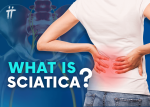
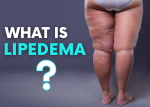

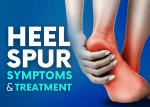
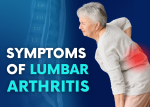
Leave a Comment